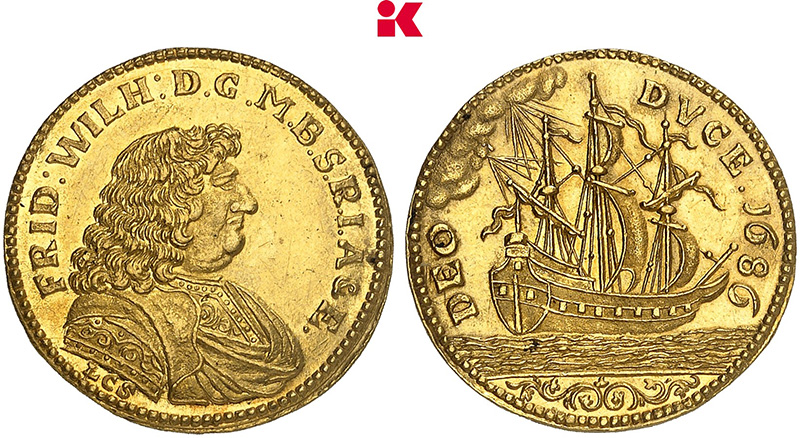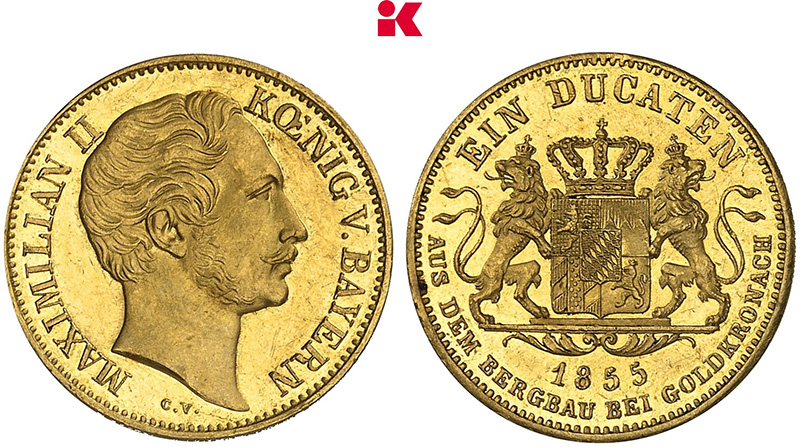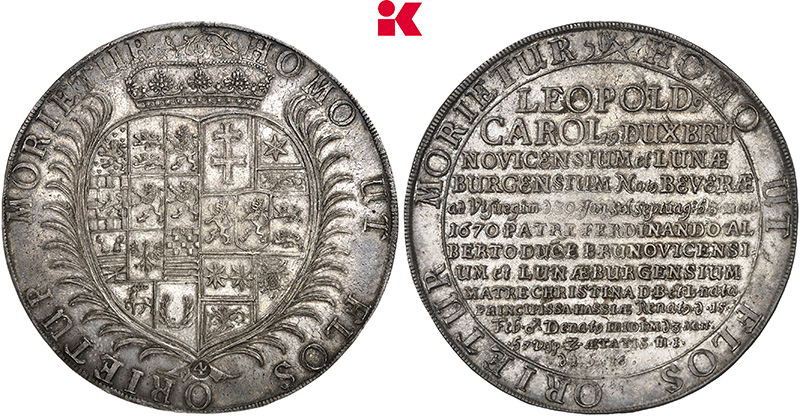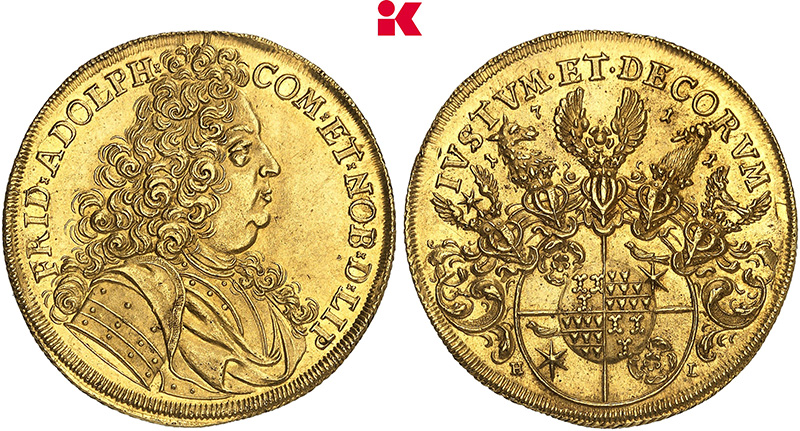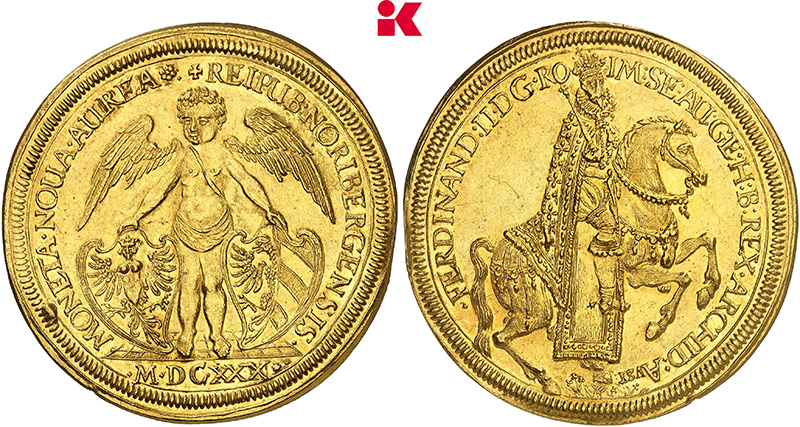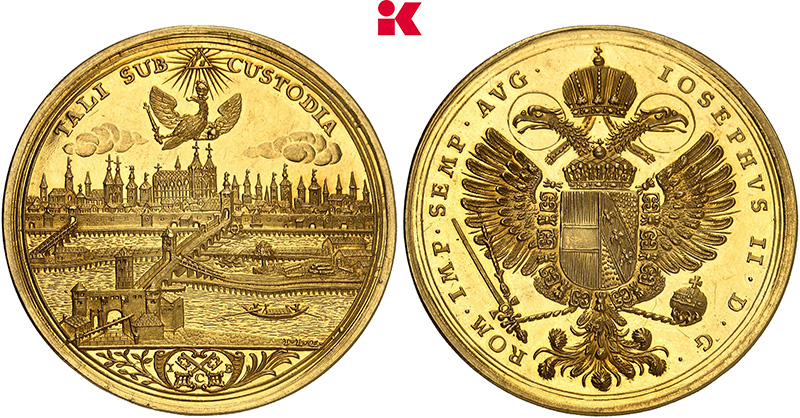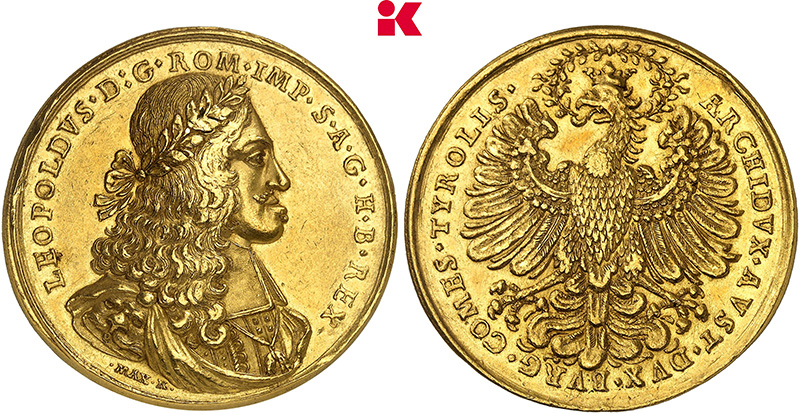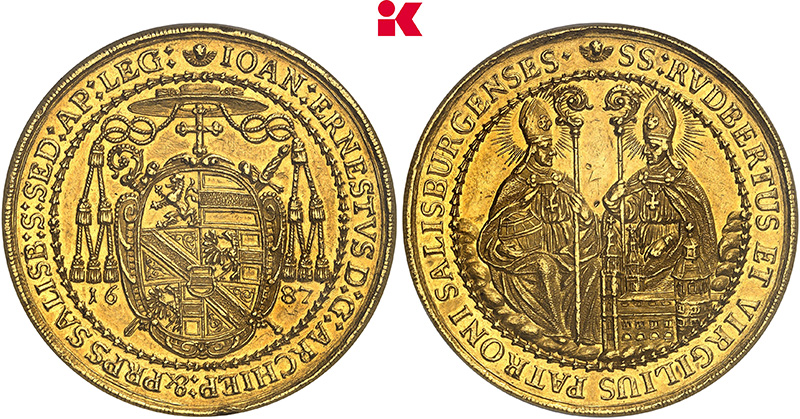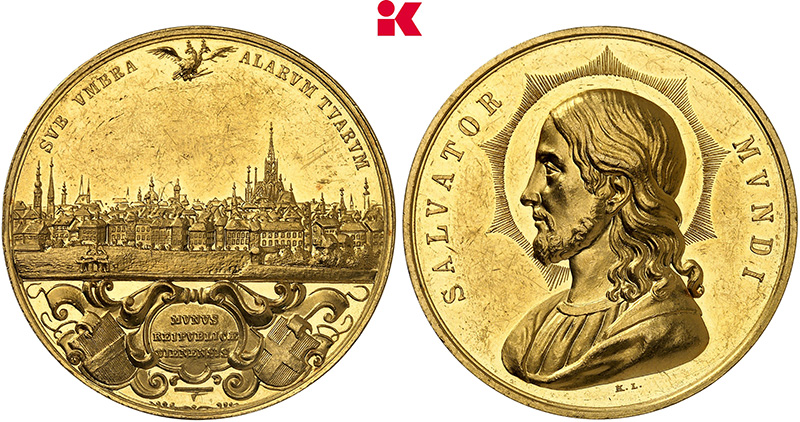In God We Trust
by Ursula Kampmann, translated by Maike Meßmann
In its current exhibition, the Oesterreichische Nationalbank, the national bank of Austria, set out to answer an ambitious question: Why does our money convey religious messages? And why do people argue about whether and in which form our money should continue to refer to religious messages?
Content
Is Our Money Supposed to Invoke the Divine?
The catalogue illustrates this question by means of four topical examples. It refers to the US dollar and recaps when and under what circumstances the motto “In God we trust” became a compulsory feature of US money. Next is the case of “Israel”: there, people are currently debating whether banknotes should refer to the creator god. And activists in Cambodia and India ask similar questions.
After introducing these examples, the exhibition takes us right to the past: from Venice and Alexander the Great to ancient Greece.
After all, the exhibition wants to reconstruct the relationship between money and the divine. A highly fascinating subject! Unfortunately, the exhibition does this in a way that we have been familiar with since the 19th century: one coin with the depiction of a god is displayed next to another coin with a different depiction of a god. Moreover, the image of ancient religions presented by the catalogue does not take the latest research into account. That is a pity!
Why Did Greek Coins Depict Gods?
Of course, depicting the divine has always been about identity – and the catalogue acknowledges that, too. After all, the divine powers that favoured a city were an important factor to create a sense of community and togetherness among citizens.
But no, the catalogue’s assumption that there was a strict hierarchy throughout Greece in which the Olympic gods played a crucial role is wrong. The latest research paints a completely different picture: every community had its own pantheon that consisted of a colourful mix of local varieties of the Olympic gods, nature deities and heroes. The people in Ephesus did not worship Artemis but Artemis Ephesia, a deity of a very special appearance that was unique to Ephesus, just like Artemis Brauronia was worshipped in Brauron.
And let us talk about rituals in general. Instead of repeating what has already been said in Gustav Schwab’s classic on Greek myths, it would have been nice if the exhibition had focused on Greek rituals. After all, worshipping the deities of one’s city was a civic duty and associated with important festivities. It was a matter of course for every citizen to march along the processions that took place during the festival of a city’s main deity.
So, depicting a god or goddess on a coin was really a matter of lived identity, it showcased an important element of daily life that held a community together – the depicted deity with its special attributes was something that every citizen identified with. Therefore, it would have made more sense to talk about how a city was connected to a deity instead of repeating what interested readers can also find on Wikipedia and what – as the bibliography states – the authors actually looked up there!
Why Did Roman Coins Depict Deities?
No, the world of Roman gods was not characterised by personifications of nature and natural events. Instead, events of daily life were understood as divine powers and it was believed that rituals and mythical processions could guarantee that they actually happened. Vesta, for example, was guarded by the Vestal Virgins in a never-extinguishing hearth fire until the fall of the Roman Empire.
And no, the Greek world of gods was certainly not an import product brought to Rome by the Etruscans. In Rome, a god was valued for the tasks they performed. Therefore, their names were translated to the names of deities that performed similar tasks in other parts of the world. Thus, Apollo turned into his Celtic equivalent Grannus when Roman soldiers warmed their limbs in Celtic baths. And when Rome had no god to perform a specific task, a god was imported from abroad with great effort through a decision of the senate, as it happened with Asclepius and Cybele.
But the fact that gods were depicted on Roman coins certainly was not about identity at least since the 1st century BC – after a transitional period when Greek engravers created Roman money. Instead, this was about portraying the men who commissioned the coins in the best light possible. By depicting gods, they demonstrated that their gens possessed the virtue of Pietas, the classical Roman combination of honouring the gods, the rules of one’s ancestors and the res publica. This was important because the people of Rome preferred to elect members of families that had a good connection to the gods. The fact that emperors systematically presented themselves as the gods’ favourite while highlighting their own virtues at the same time is something we do not need to explain further at this point.
Why Were Saints Depicted on Medieval Coins?
Well, and now we have arrived in the Middle Ages, where saints replaced gods as objects of identification. Medieval cities also had their own “pantheon”. Of course, this had a different name, but the relics that were kept in a city were of crucial importance. Therefore, municipal coins often depict saints that – not unlike in Greek antiquity – were honoured by the citizens with festivities and processions that were attended by all the people who lived there. This served the purpose of creating a common identity, we already had this topic
The fact that emperors chose different motifs for their coins and that the coin designs of the cities that opted for Reformation changed can only be mentioned as a side note here. Of course, it would have been a wonderful subject for the exhibition in order to illustrate that the question of the divine on coins is, ultimately, a question about the role that we want the divine to play in our country.
What Is the Purpose of an Exhibition?
Are you wondering why I took you on this little excursion through religious history? Well, because the catalogue to the exhibition “In God We Trust” does not. It is a mere compilation of accurate and questionable statements that seems rather chaotic.
Of course, I know how difficult it is to present a complex topic in a way that the broad public can understand. I know that we sometimes have to make do with simplifications. But especially when addressing non-experts, it is all the more important that all statements are accurate. After all, laypeople do not have the knowledge to tell what is right and what is not – while scholars should be able to do so.
Unlike a couple of decades ago, I no like to criticise so much. By now, I know to what extent our high ambitions are thwarted by time constraints. But we also need to keep in mind the educative mission that a renowned institution such as the National Bank of Austria pursues. I do not know how many school classes will visit the exhibition, but they will all get the impression that the monsters and gods from Percy Jackson novels actually represent what the Greeks and Romans believed in.
To me, this exhibition is a perfect example for why numismatics can only be pursued in a purposeful way when we take into account the entire historical, cultural and intellectual background of a coin. And whoever was responsible for this exhibition did not do this.
The catalogue for the exhibition was published in German and English.







